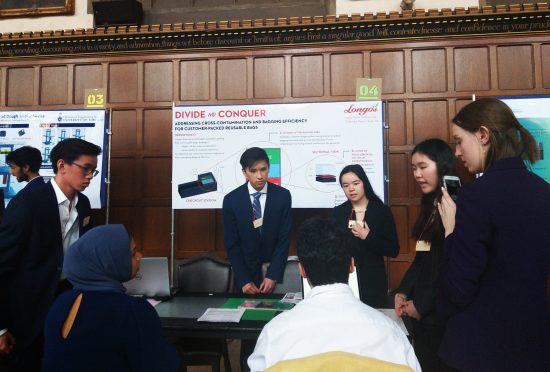

Keeping your audience’s attention in long presentations is a critical skill for any presenter. Whether it’s a product demonstration, a research report, or a motivational speech, maintaining engagement throughout the duration of the presentation is essential for conveying the message effectively. The struggles of maintaining focus in lengthy presentations are widespread, impacting the message’s reception and understanding. This article delves into the art of keeping an audience engrossed, exploring various approaches to achieve this crucial objective. We will analyze how to structure the presentation for optimal comprehension, incorporate interactive elements, utilize captivating visuals, and implement various engagement techniques to ensure audience focus and retention. We will also address common mistakes and offer actionable solutions for overcoming them. Let’s begin!
Understanding the Challenges
The Difficulty of Maintaining Focus
Maintaining focus in long presentations is a significant challenge. Audiences, by their nature, have finite attention spans, and presenters must proactively combat the inevitable waning of interest. This is especially true in the modern era where we are constantly bombarded with information. Research consistently highlights the fleeting nature of attention, particularly in large-scale presentations where the presenter’s style or the presentation’s structure fail to capture the audience’s attention. The struggle isn’t just about the audience’s waning attention; it also stems from the presenter’s own capacity to sustain enthusiasm and interest in the topic throughout an extended period.
Common Presentation Pitfalls
Many presenters fall prey to common pitfalls that diminish audience attention. These include delivering information that lacks structure, employing monotonous delivery styles, and not incorporating engaging visuals. A lack of visual aids can make presentations incredibly tedious, and an overly detailed or monotonous narrative can significantly reduce audience interest. A presenter must realize that passive listening leads to passive learning, and hence, effective strategies are key for sustaining engagement. A presenter needs to actively engage the audience throughout the presentation.
Crafting an Engaging Presentation Structure
The Power of Structure
The structure of a presentation profoundly impacts audience engagement. A well-organized presentation with clear introductions, transitions, and conclusions makes it easier for the audience to follow along. This systematic approach not only enhances understanding but also aids in sustaining focus. A structured presentation provides a framework for navigating the topic effectively and helps the audience process information more efficiently.
Breaking Down Long Presentations
Long presentations are often perceived as intimidating, but breaking them down into smaller, digestible sections can significantly improve audience engagement. Use strategic transitions between sections to maintain momentum. Include brief summaries or key takeaways after each segment to reinforce learning and prevent audience members from losing track of the main ideas. By breaking a presentation into logical units, you allow your audience to process information in manageable chunks, reducing mental fatigue and enhancing comprehension.
Utilizing Visual Aids Effectively
Beyond Bullet Points
Visual aids are essential for keeping an audience engaged, especially in long presentations. However, the simple use of bullet points and text-heavy slides can prove ineffective for keeping the audience invested and focused. A shift towards more dynamic visual representations is necessary. These might include graphics, images, charts, and concise summaries. Incorporate visual elements that enhance the presentation’s memorability and clarity. Visual aids should be thoughtfully selected to reinforce key concepts and add depth to the presentation.
Strategic Use of Multimedia
Beyond static visuals, consider incorporating video clips, animations, and interactive elements. Such approaches can not only make the presentation more engaging but also illustrate abstract ideas effectively. This can make learning highly memorable and ensure audience comprehension. Interactive elements, polls, and quizzes can further enhance audience participation and help maintain their engagement. A visual approach that moves away from a strictly verbal style can effectively retain focus for longer periods.
Employing Interactive Techniques
Encouraging Audience Participation
Engaging an audience is crucial for sustaining their interest. Effective presentations encourage active participation to prevent any loss of focus or interest. Ask questions to the audience, encourage discussion, and use interactive elements to encourage audience participation. This approach not only makes the presentation more dynamic but also reinforces the key takeaways among the audience.
Creating a Two-Way Conversation
Creating a two-way conversation between the presenter and the audience is essential for engagement. Engage your audience with interactive polls or quizzes. This fosters an active environment where the audience can actively participate and feel more engaged.
Maintaining Momentum and Enthusiasm
Pace and Delivery
The pace and delivery style significantly affect audience engagement. Avoid rambling or delivering information too quickly. Instead, find an engaging and steady pace that keeps the audience interested. Vary your tone and energy level to maintain momentum and prevent monotony. Adjust the pace according to the audience’s response to keep them focused and interested.
Addressing Audience Needs
Understanding the audience’s needs is critical for maintaining their interest and focus. Demonstrating empathy to the audience’s needs is crucial for delivering a truly engaging presentation. Anticipate their questions, address concerns, and tailor the content to their interests. Understanding and responding to the audience is vital for keeping their attention and interest throughout the presentation.
In conclusion, maintaining audience attention in long presentations requires a multifaceted approach that prioritizes engagement, clarity, and variety. By incorporating interactive elements, visual aids, and a clear structure, presenters can keep their audience captivated and invested in the message. If you’re looking to deliver truly impactful presentations, remember to focus on these key strategies to maximize your audience’s engagement and ensure the success of your presentation. Explore the resources available for presentation design and engage in continual professional development for enhanced delivery skills.